
Before I get to the observations of V603 Aql, some notes on equipment at the Observatory.
The filter assignments in MaximDL on the computer in the dome were wrong, as I discovered while reducing last night's data. The filterwheel is set up like so:
Or, in ASCII art,
.. .
V R
. B I .
clear
.
The filterwheel setup table in MaximDL ought to look like this:
(The relative positions of the filters is definitely correct in the diagram above, though now that I think about it, I wonder if the double-peg ought to be next to the clear filter?)
Last night the order was B,V,R,I,clear. I thought things looked a bit funny.
I took dome flats after fixing the filter assignment table. With the dome slit open around sunset, I rotated the dome so that the white card was to the south of the telescope. I turned on the dome lamp on the north side of the dome so it would shine across the interior and onto the card. I pointed the telescope at the card and took exposures of length 0.2 seconds. The resulting raw flatfield frames had mean values roughly
B flat:

V flat:
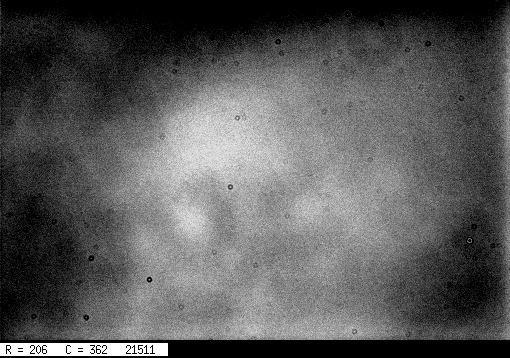
R flat:
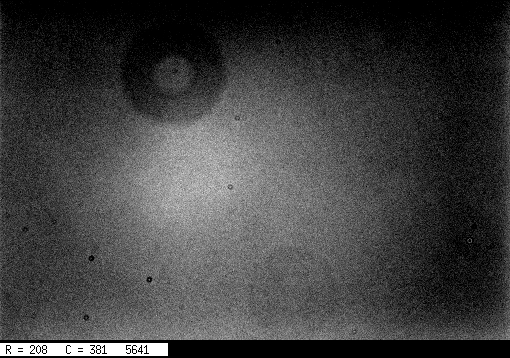
I flat:
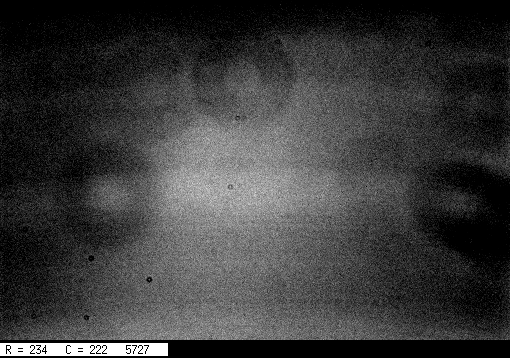
"Clear" flat:
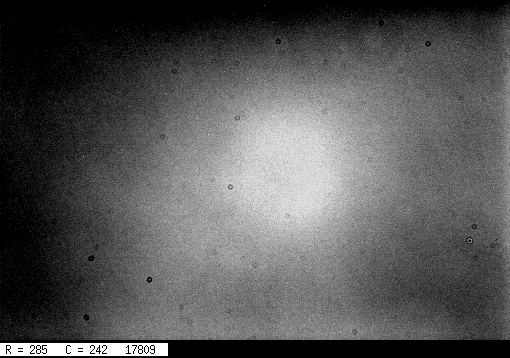
The appropriate time for 1-second twilight sky flats appears to occur when the Sun is at an altitude between 3 and 5 degrees below the horizon. As the Sun sets, the best order to take twilight flats is probably B, V, I, R, clear. Note the switching of I and R. If one takes 10 exposures of length 1 second each for each filter position (binning the ST8 3x3 so it takes about 7 seconds to read out), one can just barely get flats in all four filters plus the clear filter during a single sunset; but one has to hurry to do it.
The SBIG ST8 can reach about 30 degrees Celsius below the ambient dome air temperature.
It is easy to see Vega and Altair when the Sun is about six degrees below the horizon.
On the night of August 2/3, 2004 EDT, Tracy Davis and I used the RIT Observatory's 12-inch Meade telescope and SBIG ST8 CCD camera to monitor the star V603 Aql, a cataclysmic variable under study by the Center for Backyard Astrophysics.
The plan:
Notes from the night
Here's a chart of the field of V603 Aql, taken last year with our equipment; the field is about 20 arcminutes wide.
Note that
I measured the instrumental magnitude of each star with aperture photometry, using a radius of 6 pixels = 11.1 arcseconds, and sky defined by an annulus around each star. Following the procedures outlined by Kent Honeycutt's article on inhomogeneous ensemble photometry, I used all stars available in each image to define a reference frame, and measured each star against this frame.
Below is a graph of the scatter in differential magnitude versus magnitude. Note that star "A" (the brightest, at differential magnitude 0) is very saturated, and star "B" (next brightest, at diff mag = 1.3) was very close to the saturation point; I did not include either one in the solution as a reference. The best comparison stars appear to me to be "C" (diff mag = 3.655) and "E" (diff mag = 4.575).

The big outlier at differential mag = 3.3 is V603 Aql. The two smaller outliers around mag 3.5 are stars which were so close to the edge of the field that they sometimes fell on the chip and sometimes off. I did not include them as references in the solution.
Light curves for selected stars in the field are shown below. It is clear that most of the stars in the field are not varying appreciably, but V603 Aql is, as the green light curve shows. The other data belong to stars C, G, D, F, and E.
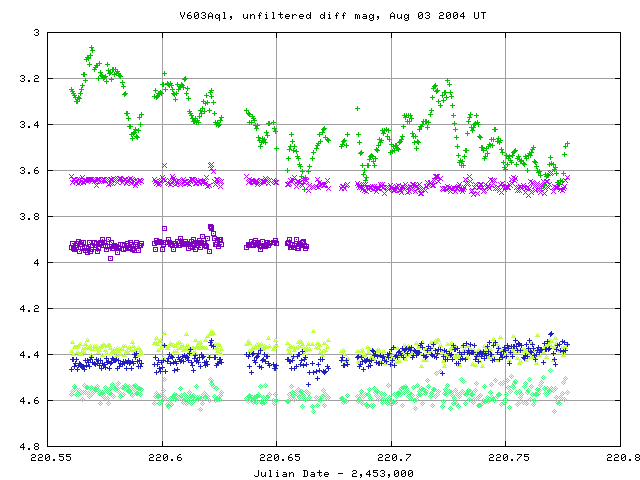
Here's a closeup of the variation in V603 Aql itself:
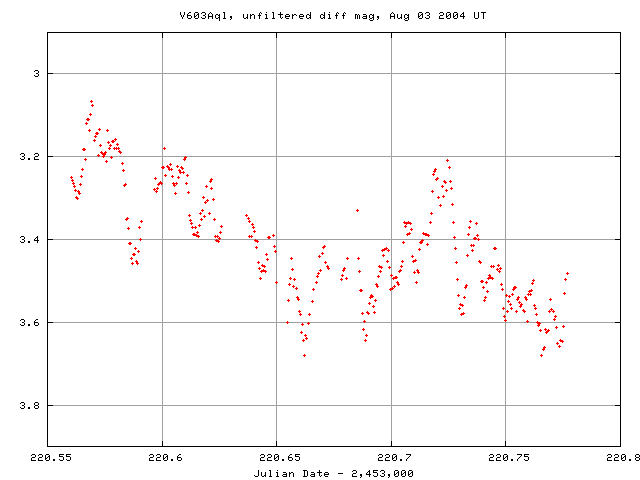
I've made a table of the measurements themselves, with three different flavors of time. Here's the start of the table:
# Measurements of V603Aql made at RIT Obs, Aug_ 3, 2004 UT, # taken by Michael Richmond and Tracy Davis. # All data taken with 12-inch LX-200 + no filter + SBIG ST-8 CCD # no focal reducer, so at native f/10 # Each exposure 20 seconds long; the tabulated times are midexposure # and accurate only to +/- 1 second. # 'mag' is a differential magnitude based on ensemble photometry # tabulated value is 'mag fainter than star C = USNOA2.0 0900-13635049' # # UT day JD-2,450,000 HJD-2,450,000 mag Aug_03.06038 3220.56038 3220.56514 -0.405 Aug_03.06081 3220.56081 3220.56557 -0.398 Aug_03.06125 3220.56125 3220.56601 -0.390 Aug_03.06169 3220.56169 3220.56645 -0.382
Last modified 8/04/2004 by MWR.